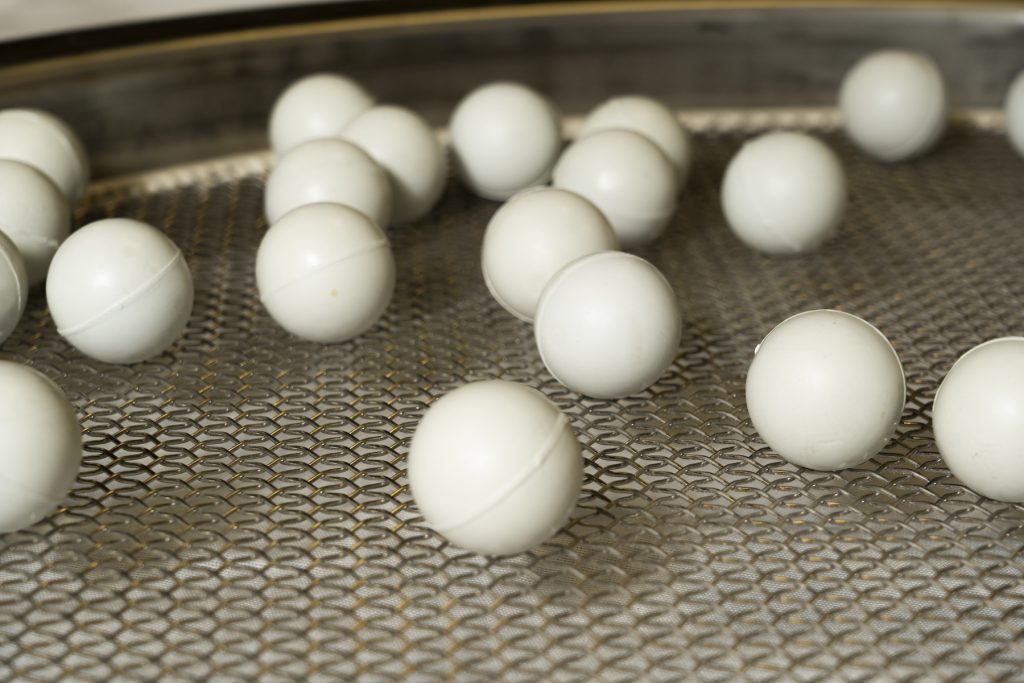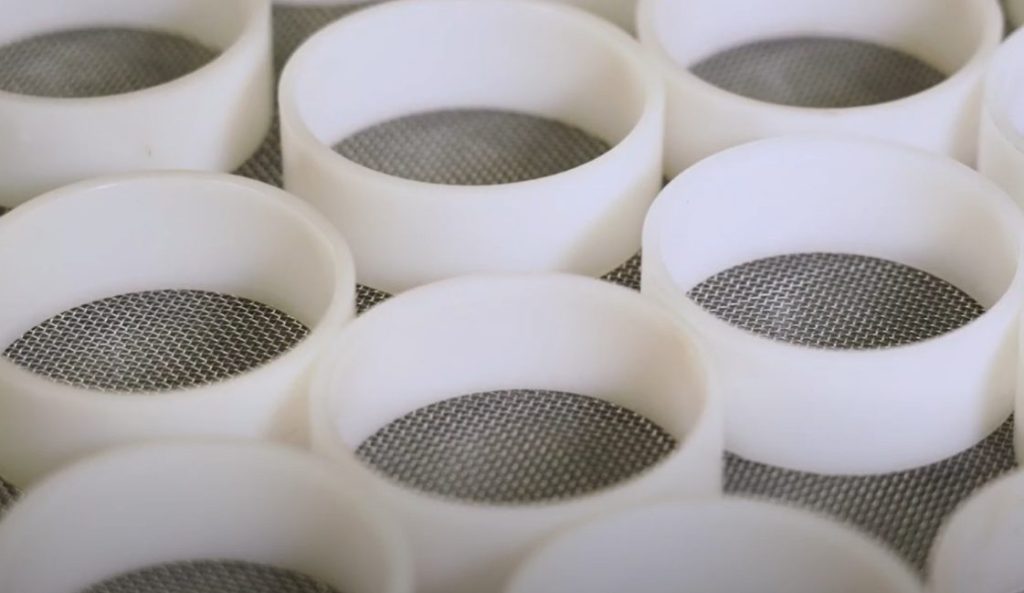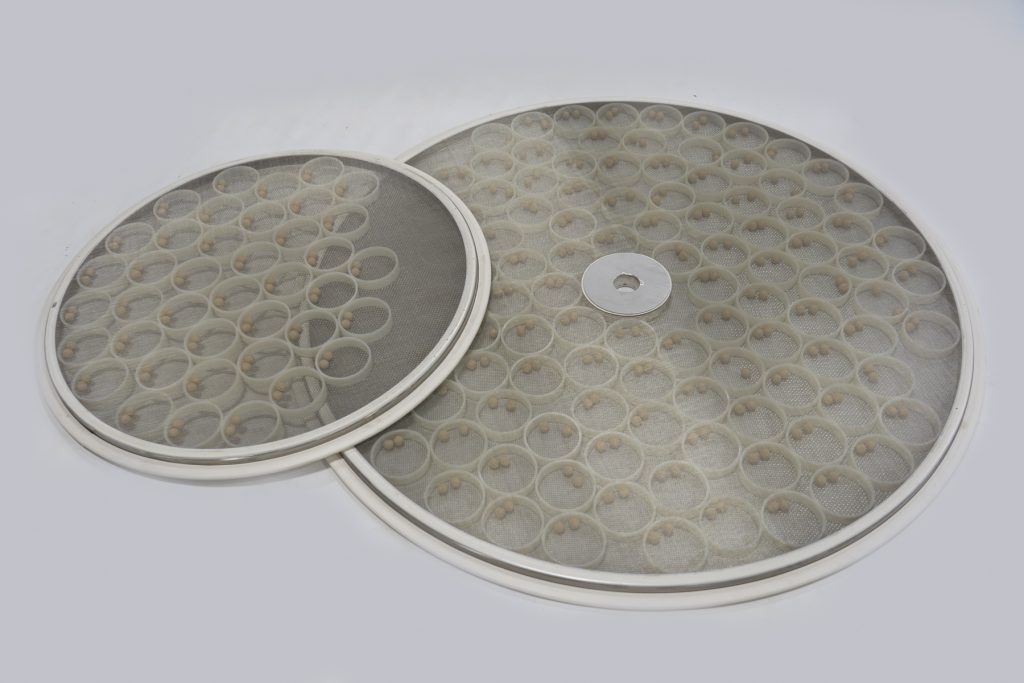Choose the Right Deblinding Screen for your Application
Using a vibratory separator machine is a reliable method of sorting, classifying, and cleaning a wide range of materials, both dry and wet. Because the material is sorted through a wire mesh screen, some materials tend to clog the mesh openings, effectively limiting the capacity of the machine’s throughput. To avoid stopping the process to clean and restart frequently, separator machine manufacturers offer several different types of mechanical cleaning systems that continually deblind (or de-clog) the screen surface as the machine runs. Determining the best deblinding screen type for your application depends on understanding how the material behaves under each deblinding method.
Deblinding Solutions
There are typically three different types of deblinding solutions, and each is built into the classifying screen that requires attention to mitigate clogging. Any deblinding solution covered below can be utilized on any or all classifying screen decks in a machine that need it, dependent upon the inherent characteristics of the media being processed.
Summary of Construction
| Standard Construction | Ball Tray | Clean Ring | Sandwich |
|---|---|---|---|
| Bottom Support (Standard) | 4 Market Grade x 0.047” T-304 Stainless Steel | 304 SS Perforated Metal Plate | T-304 SS 8 Mill Grade x 0.025” |
| Top Classifying Screen | T-316 Stainless Steel | T-316 Stainless Steel | T-316 Stainless Steel |
| Classifying Screen Sealing | FDA/CFIA Approved Epoxy Grade / Spot Weld | FDA/CFIA Approved Epoxy Grade / Spot Weld | FDA/CFIA Approved Epoxy Grade / Spot Weld |
| Screen Cleaning Devices | 1 3/8” dia. Balls: EPDM, natural rubber, neoprene, or silicone | Sliders: Nylon, Polypropylene, High Heat Polyester, Hytrel Polyester | 5/8″ dia. Balls and Sliders |
| Replaceable Classifying Screen | Yes | Yes | Yes |
1. Ball Tray Assembly

The Ball Tray Assembly consists of rubber balls contained between the classifying screen above and a coarser support mesh below, with a 2” space between them to provide deblinding. The balls, typically 1-3/8” in diameter, bounce between the two layers from the motion of the separator machine, impacting the classifying screen with sizeable force, dislodging near size particles that clog it.
Ball tray assemblies are especially effective when using a coarser mesh due to the high impact energy and the bouncing/reverberating action which forces near-size particles to be cleared from the screen openings.
Ball materials can be specified in a variety of materials, including EPDM, natural rubber, neoprene, and silicone.
A ball screen assembly can be disassembled to replace individual components by loosening the quick-release clamp ring between the frame and the 2” blank frame below. Removing the top frame and screen will provide access to change balls and or remove the coarse carrier screen.
2. Clean Ring Assembly

A Clean Ring Assembly, also known as a slider assembly, consists of circular rings (sliders) contained between the top classifying screen and a bottom perforated metal plate with enough space to allow them to move both radially and vertically. The sliders move around, into the classifying mesh by the motion of the separator machine.
As with ball tray assemblies, the sliders are available in a wide range of materials, including nylon, polypropylene, high-heat polyester, and Hytrel polyester.
This method is effective for both wet and dry screening applications. It is also effective for hard or friable material separation due to the slider’s ability to shear and break materials into smaller pieces without such force that could damage the classifying mesh.
Slider Assemblies are especially useful for deblinding when using a very fine mesh due to the low impact energy and the gentle shearing wiping action which forces the near-size particles to be cleared from the screen openings.
A slider assembly can be disassembled to replace individual components by removing the quick-release clamp ring between the frame and the Clean Ring Assembly. Removing the screen gasket from the assembly will allow access to remove or replace the sliders.
3. Sandwich Screen Assembly

The Sandwich Screen Assembly is essentially a combination of smaller balls and sliders put together; however, sandwich screens are also commonly used with just sliders or just balls. Balls and sliders are contained between a classifying mesh on the top and a coarser support screen mesh on the bottom, attached to a tension ring/frame either epoxy or weld mounted.
In Sandwich Screen Assemblies, the unique combination of balls inside each slider yields better results than sliders or balls individually.
The balls bounce off the carrier mesh and up into the classifying mesh, forcing the near-size particles to be cleared from the screen openings, and the sliders use a gentle shearing action, forcing particles away from the screen openings.
Which de-blinding option will work best?
The quick reference guides below summarize the pros and cons of each deblinding solution option covered above; Ball Tray Assemblies, Clean Ring Assemblies, Sandwich Screen Assemblies – Specifically when roughly when to use each one and the Operational Characteristics of each.
However, to ensure you choose the correct option you should Reach Out to Our Separation Experts.
Summary of Use
| Condition / Material Type | Ball Tray | Clean Ring | Sandwich |
|---|---|---|---|
| Dry Material | Good | Good | Good |
| Wet Material | Poor | Good | Good |
| Materials w/ Particle Sizes over 100 mesh | Good | Good | Good |
| Fibrous Material | Poor | Good | Good |
| Sticky Material | Good | Poor | Good |
| Hard Material (Irregular) | Good | Poor | Good |
| Hard Material (Friable) | Good | Good | Good |
| Hard Material (Pliable) | Good | Good | Good |
| Temperature-Sensitive Materials | Good | Poor | Good |
Summary of Operational Characteristics
| Operational Characteristic | Ball Tray | Clean Ring | Sandwich |
|---|---|---|---|
| Deblinding Uniformity | Poor | Good | Good |
| Noise Level | Medium | High | Low |
| Ease of Assembly Cleaning | Good | Good | Good |
| Relative Cost | Low | Low | High |
Gerard Daniel’s Expertise
Gerard Daniel’s Performance™ Series of round vibratory separator machines effectively separate dry goods by size or liquids from solids. Proudly designed and assembled in the USA, engineered to last, and built with high-quality components – our machines are available with all of the deblinding options discussed above as well as a complete range of replacement parts to keep them running in top condition.
Contact Our Experts to assist you in selecting the right machine and accessories for your needs.